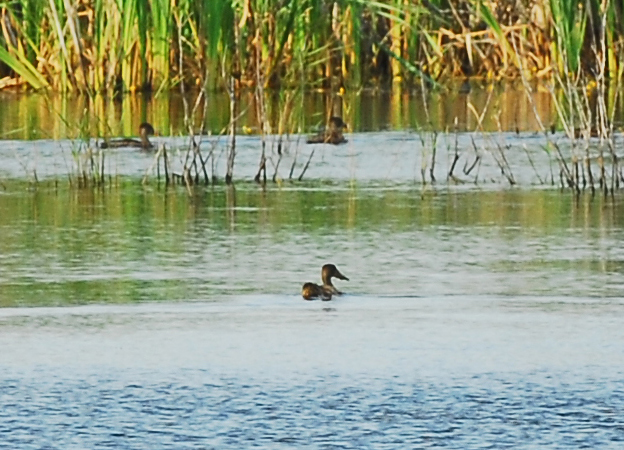
Wetlands are among the most biologically diverse, productive, and important life support systems on earth. They are integral to the functioning of important ecosystems and species and they provide us all with a wide range of benefits—from flood control and water supply to recreational activities. When these benefits aren’t recognized or valued, we may lose these valuable resources and the benefits they provide are either costly or impossible to replace.
A wetland is “land that is saturated with water long enough to promote wetland or aquatic processes as indicated by poorly drained soils, hydrophytic (water-loving) vegetation, and various kinds of biological activity which are adapted to a wet environment.”
(National Wetlands Working Group, 1988)
Recognizing an opportunity to support wetlands conservation efforts, Nutrien partnered with Ducks Unlimited Canada (DUC) to purchase wetlands in need of protection and restoration efforts.* By pledging US$1 million to DUC Nutrien established the Legacy Wetland Restoration Program, ($250 thousand over four years) these funds are used to purchase habitat in DUC’s waterfowl target areas across Alberta, Saskatchewan and Manitoba. The wetlands and nearby uplands are restored, and a conservation easement is placed on the habitat to protect it forever. (Conservation easements stay with the land, regardless of who owns it.)
These projects (two in Alberta and one in Saskatchewan) were selected based on their high biological function—a combination of wetlands and pasture, forage or other lands where birds and animals have habitat. They are also in target areas previously identified by DUC as areas needing wetland restoration. In general, these are areas that have most likely been drained or cleared but which are also not suited for cropland use, pasture or forage production.
This program’s current projects are areas of high value for the northern pintail duck, a waterfowl species of concern according to DUC. Recognized by its slender build, elegant neck and elongated, spiky central tail feathers, the northern pintail is also able to achieve great speeds while flying, earning the species the nickname ‘greyhound of the air’. Source: www.ducks.ca
The key to wetland restoration is reestablishing the area’s original hydrology and topography, and restoring natural processes including the original native plant cover. For the projects currently underway, DUC conservation specialists and third party contractors will be restoring wetlands that have been drained with ditches. To reverse the harmful effect of the ditch, earthen plugs are pushed into the ditch at its lowest points, stopping drainage and backing up the water flow. On average, up to 20 staff days are required for land acquisition, restoration and perimeter fencing installation.
When the time comes, an online auction, open to all bidders, is held to resell the land. Local advertisers are engaged to ensure a broad level of awareness of the sale. This publicity is also an important way for DUC to communicate that new conservation easements placed upon the property. It is important for any potential buyers to know that they will be required to maintain the status quo of the land state at the time of purchase, and, for example, they cannot drain wetlands or clear any upland areas.
It takes approximately 3 to 4 years for a project to progress through this program – from the initial purchase to the restoration, to the placement of easement and the eventual resale. Revenues from the sale of the land will be reinvested into a new purchase and the entire process will begin again – creating a legacy of wetland restoration projects.